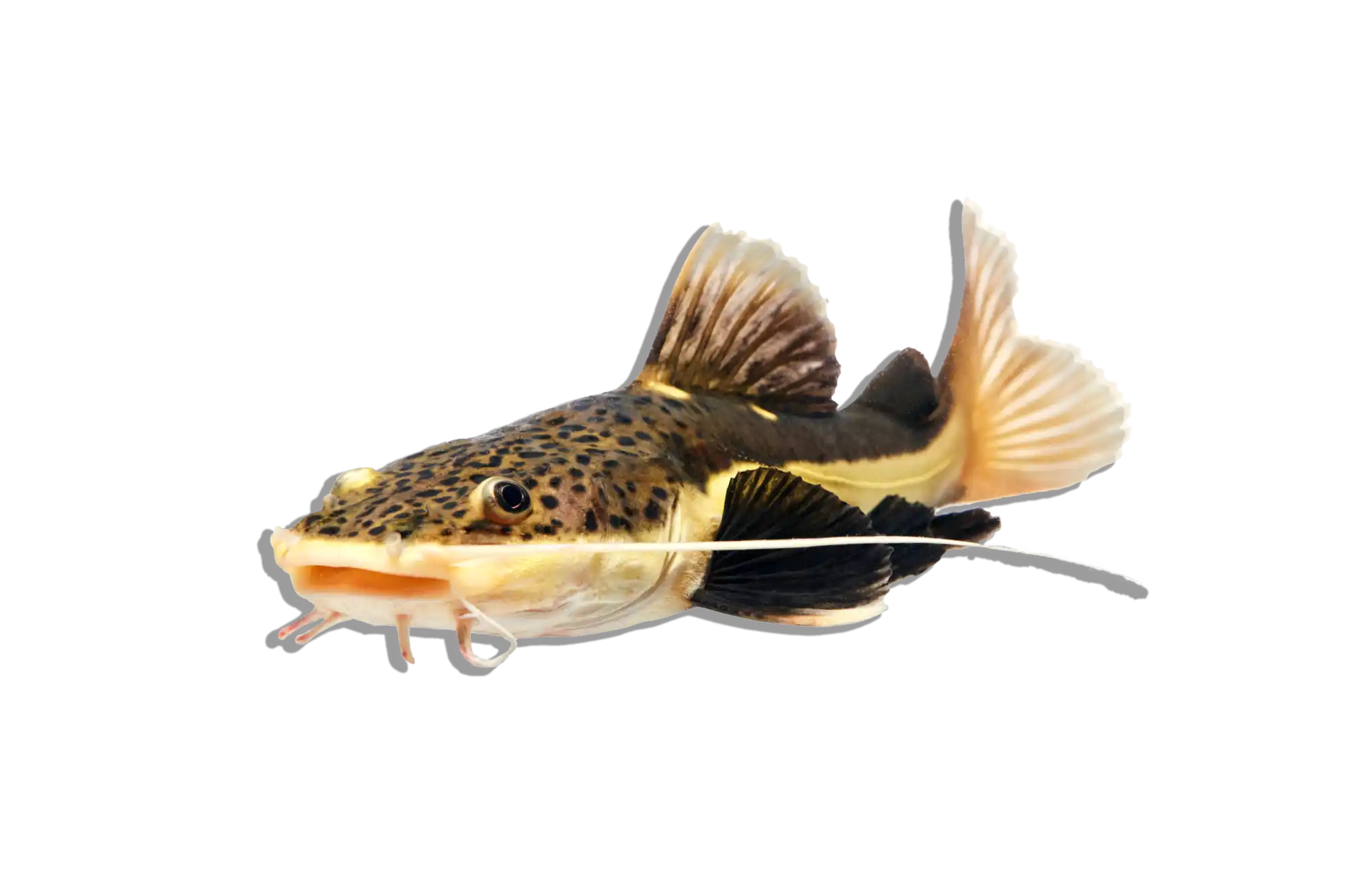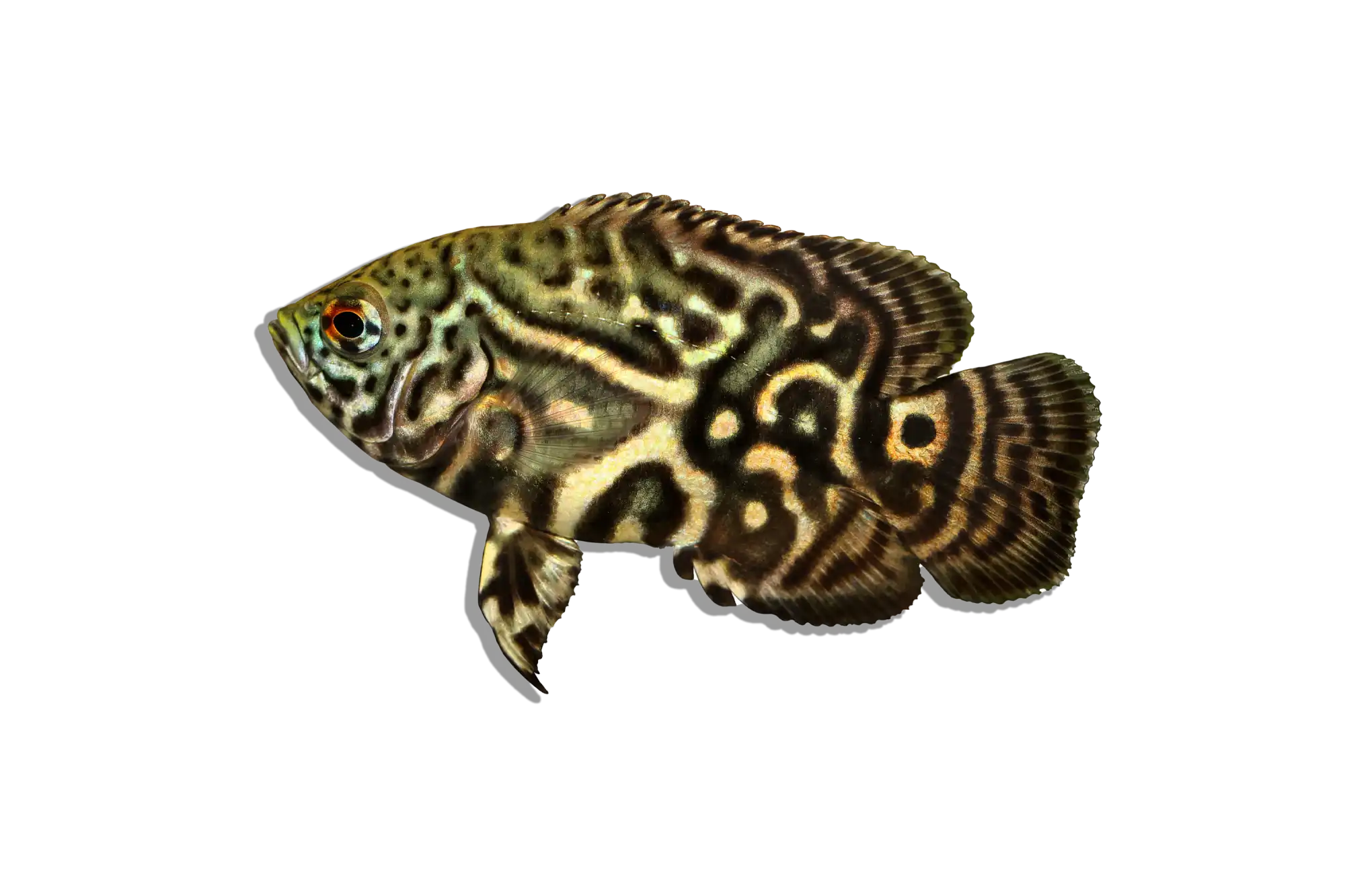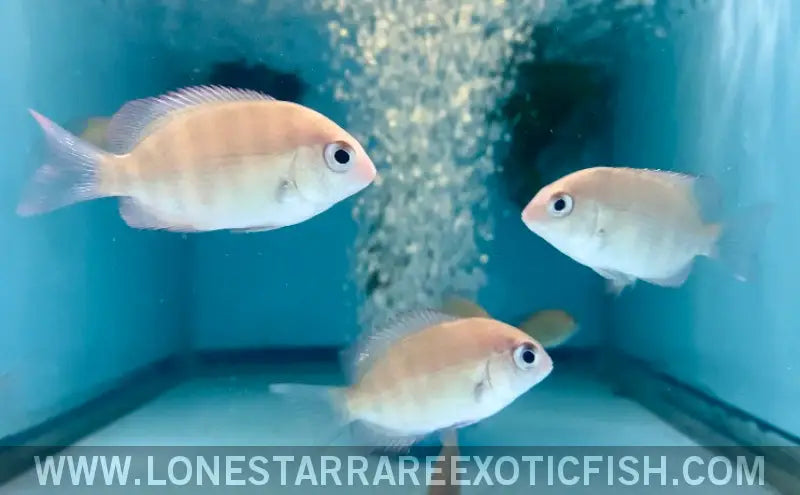Description
Common Name: Pinstripe Damba Cichlid
Scientific Name: Paretroplus menarambo
Other Names: Menarambo Cichlid, Damba Mipentina
The Pinstripe Damba Cichlid is a rare and striking freshwater fish known for its distinctive vertical pinstripe pattern and robust body. This species is highly prized by cichlid enthusiasts for its unique appearance and the challenge of maintaining it in captivity.
Habitat and Distribution:
The Pinstripe Damba Cichlid is endemic to Madagascar, specifically found in the freshwater lakes and rivers of the northwest region of the island, including Lake Tseny and surrounding waterways. These fish inhabit clear, slow-moving waters with sandy or muddy substrates and plenty of aquatic vegetation.
Size and Lifespan:
In both the wild and captivity, Pinstripe Damba Cichlids can grow up to 10-12 inches (25-30 cm) in length. With proper care, their lifespan can range from 10 to 15 years, depending on the quality of their diet and water conditions.
Diet and Behavior:
Pinstripe Damba Cichlids are omnivorous, feeding on a variety of plant matter, invertebrates, and detritus in their natural habitat. In an aquarium, their diet should include high-quality cichlid pellets, fresh vegetables such as spinach and peas, and occasional protein-rich foods like bloodworms, brine shrimp, and small insects. These cichlids are generally peaceful but can be territorial, especially during breeding. They are best kept in groups to reduce aggression and encourage natural behavior.
Breeding and Reproduction:
Breeding Pinstripe Damba Cichlids in captivity is possible but challenging due to their specific environmental needs. They are substrate spawners, with the female laying eggs on flat surfaces such as rocks or the aquarium glass. Both parents guard the eggs and fry, showing strong parental care. To encourage breeding, provide a spacious tank with plenty of hiding spots and flat surfaces for spawning, maintain optimal water conditions with regular water changes, and feed a varied diet to enhance their health and breeding readiness.
Aquarium Care and Tank Requirements:
Due to their size and social nature, Pinstripe Damba Cichlids require a large aquarium, with a minimum of 75-100 gallons recommended for adult specimens. The tank should have a soft, sandy substrate and include plenty of rocks, driftwood, and aquatic plants to mimic their natural habitat and reduce stress. Efficient filtration and regular water changes are essential to maintaining water quality. The water temperature should be kept between 75-82°F (24-28°C), with a pH of 7.5-8.5 and moderately hard to hard water.
Ideal Tank Mates:
Pinstripe Damba Cichlids are generally peaceful and can be kept with other non-aggressive fish that share similar water parameter requirements. Suitable tank mates include other Malagasy cichlids, larger tetras, barbs, and other medium to large-sized community fish. Avoid housing them with highly aggressive or fin-nipping species that may cause stress or injury.
Difficulty Level:
Advanced. Pinstripe Damba Cichlids are challenging to keep due to their specific tank requirements, diet, and sensitivity to water quality. They are best suited for experienced aquarists with the space and resources to provide proper care. Their unique appearance and rarity make them a rewarding species for dedicated cichlid enthusiasts.
Water Parameters:
• Temperature: 75-82°F (24-28°C)
• pH: 7.5-8.5
• General Hardness (GH): 10-20 dGH
• Carbonate Hardness (KH): 8-12 dKH
• Ammonia: 0 ppm (ideal)
• Nitrite: 0 ppm (ideal)
• Nitrate: <20 ppm (ideal)
Additional Information:
• The Pinstripe Damba Cichlid’s distinctive vertical stripes and robust build make it a standout addition to any large aquarium.
• They are known for their strong parental care, with both parents actively guarding and tending to the eggs and fry, making them fascinating to observe during the breeding process.
• Conservation status: The Pinstripe Damba Cichlid is critically endangered in the wild due to habitat loss and overfishing. Efforts in captive breeding and conservation are crucial for preserving this unique species.




















